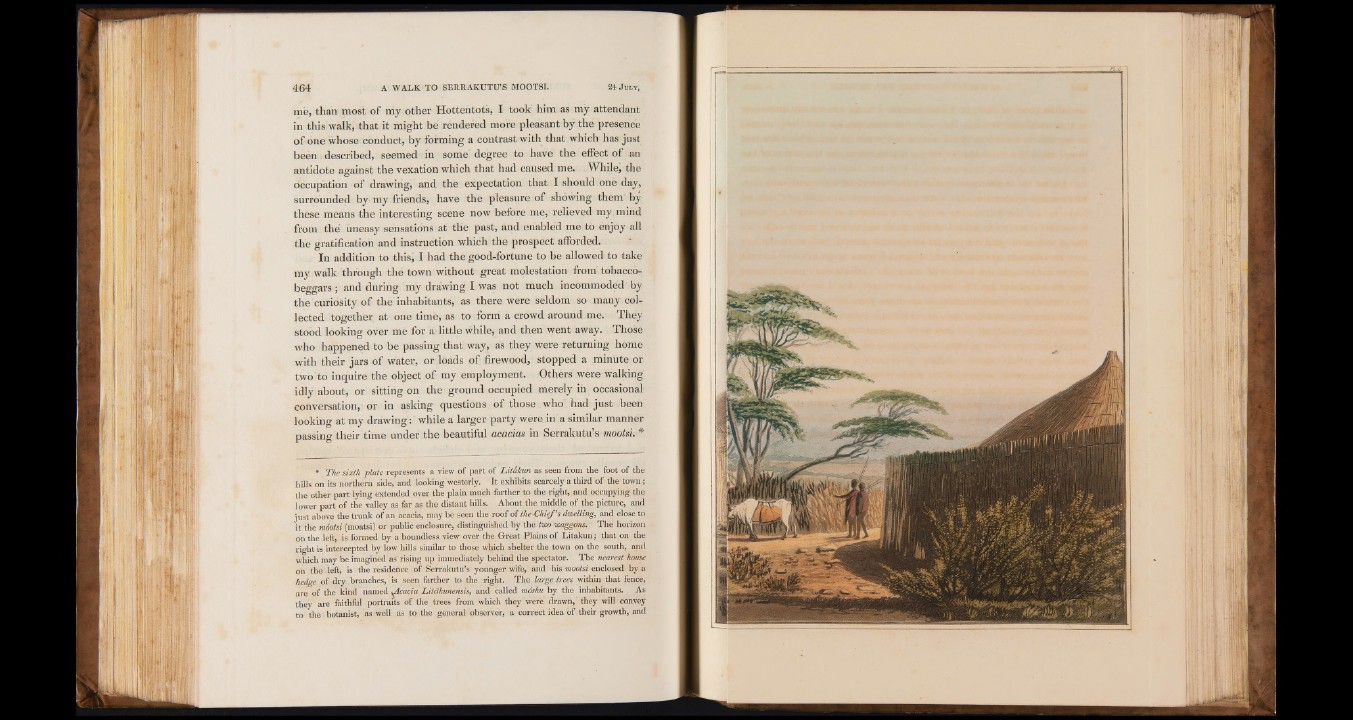
me, than most of my other Hottentots, I took him as my attendant
in this: walk, that it might be rendered more pleasant by the presence
of one whose conduct, by forming a contrast with that which has just
been, described, seemed in some'degree to have the effect o f an
antidote against the vexation which that had caused me. While, the
occupation of drawing, and the expectation that I should one day,
surrounded by my friends, have the pleasure of showing them by
these means the interesting scene now before me, relieved my. mind
from the uneasy sensations at the past, and enabled me to enjoy all
the gratification and instruction which the prospect afforded.
In addition to this, I had the good-fortune to be allowed to take
my walk through the town without great molestation from tobacco-
beggars; and during my drawing I was not much incommoded by
the curiosity of the inhabitants, as there were seldom so many collected
together at one time, as to form a crowd around me. They
stood looking over me for a little while, and then went away. Those
who happened to be passing that: way, as they were returning home
with their jars of water, or loads of firewood, stopped a minute or
two to inquire the object of my employment. Others were walking
idly about, or sitting on the ground occupied merely in occasional
conversation, or in asking questions of those who had just been
looking at my drawing: while a larger party were in a similar manner
passing their time under the beautiful acacias in Serrakutu’s mootsi.*
* The sixth plate represents a view of part of LitaJcun as seen from the foot of the
hills on its northern side, and looking westerly. It exhibits scarcely a third of the town;
the other part lying extended over the plain much farther to the right, and occupying the
lower part of the valley as far as the distant hills. About the middle of the picture, and
just above the trunk of an acacia, may be seen the roof of the-C hiefs dwelling, and close to
it the mdotsi (moatsi) or public enclosure, distinguished by the two waggons. . The horizon
on the left, is formed by a boundless view over the Great Plains of Litakun; that on the
right is intercepted by low hills similar to those which shelter the town on the south, and
which may be imagined as rising up immediately behind the spectator. The nearest house
on the left, is the residence of Serrakutu’s younger wife, and his mootsi enclosed by a
hedge of dry branches, is seen farther to the right. The large trees within that fence,
are of the kind named yicacia LitaJcunensis, and called m6shu by the inhabitants. As
they are faithful portraits of the trees from which they were drawn, they will convey
to the botanist, as well as to the general observer, a correct idea of their growth, and